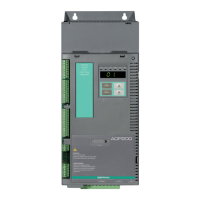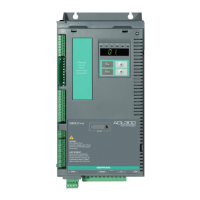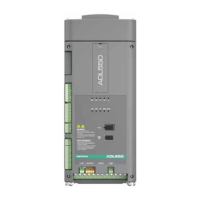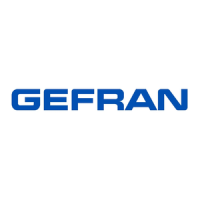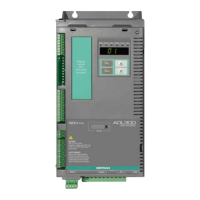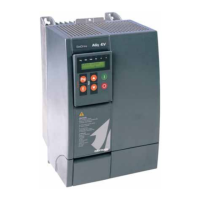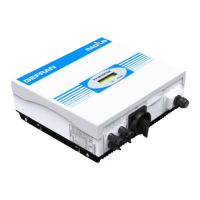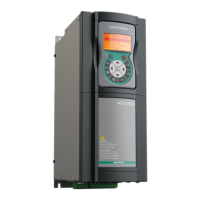_____ _
User Guide Electrical Line Shaft for ADV200 Page 26 of 72
5.8 ENGAGE Menu
The term “Engage” refers to the phase in which a slave is linked to a master in electric line shaft (with the set
ratio).
The Engage command must always be assigned when a slave motor has to be synchronized in electric line
shaft.
The Engage function control diagram is shown in the chapter “CONTROL DIAGRAMS” Figure 29. Engage –
Ramp Mode and Figure 30. Engage – Recovery Mode.
In the most common case, where master and slave have to start and stop simultaneously, the Engage
command has to be given before the master starts; synchronism is immediately signaled in monitor variable
Els Engage Reac mon.
Two Engage modes are available if you have to engage a slave to a master already in movement:
1. Ramp
2. Recovery
Figure 7. Engage in Ramp mode
Figure 8. Engage in Recovery mode
Examples considered for Ratio = 1
Engage in Ramp mode
After receiving the Engage command, the slave goes to electric line shaft with the master using the acceleration
ramp set in Els Engage Acc Time.
At the end of the acceleration ramp, the reaching of synchronism is signaled in monitor variable Els Engage
Reac mon.
Engage in Recovery mode
With the Engage command active and on the edge of the Els Recovery trigger signal, the slave goes to electric
line shaft with the master using the acceleration ramp set in Els Engage Acc Time and recovers the space
traveled by the master starting from the trigger edge.
Recovery of the space traveled by the master generates a trapezoidal speed space profile superimposed on
the synchronism speed.
The Els Recovery trigger can be assigned to a standard digital input or to a freeze input on the card of the
encoder used for flux vector CL control. There are no uses of freeze inputs of encoder cards not assigned
to the control.
Use of the freeze input ensures the ability to use sensors directly on-board the machine as triggers for the Els
Recovery signal (pulse sensors).
